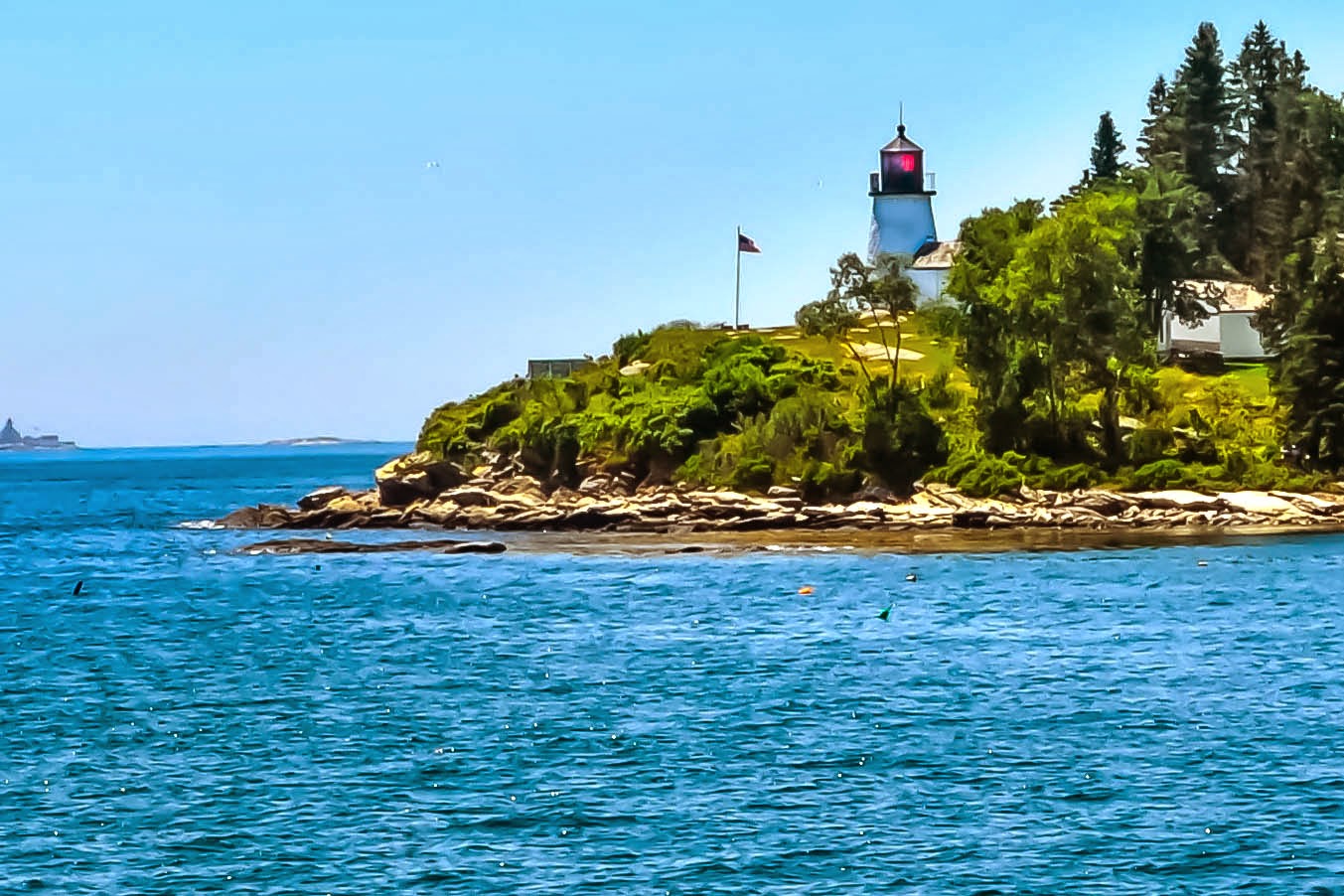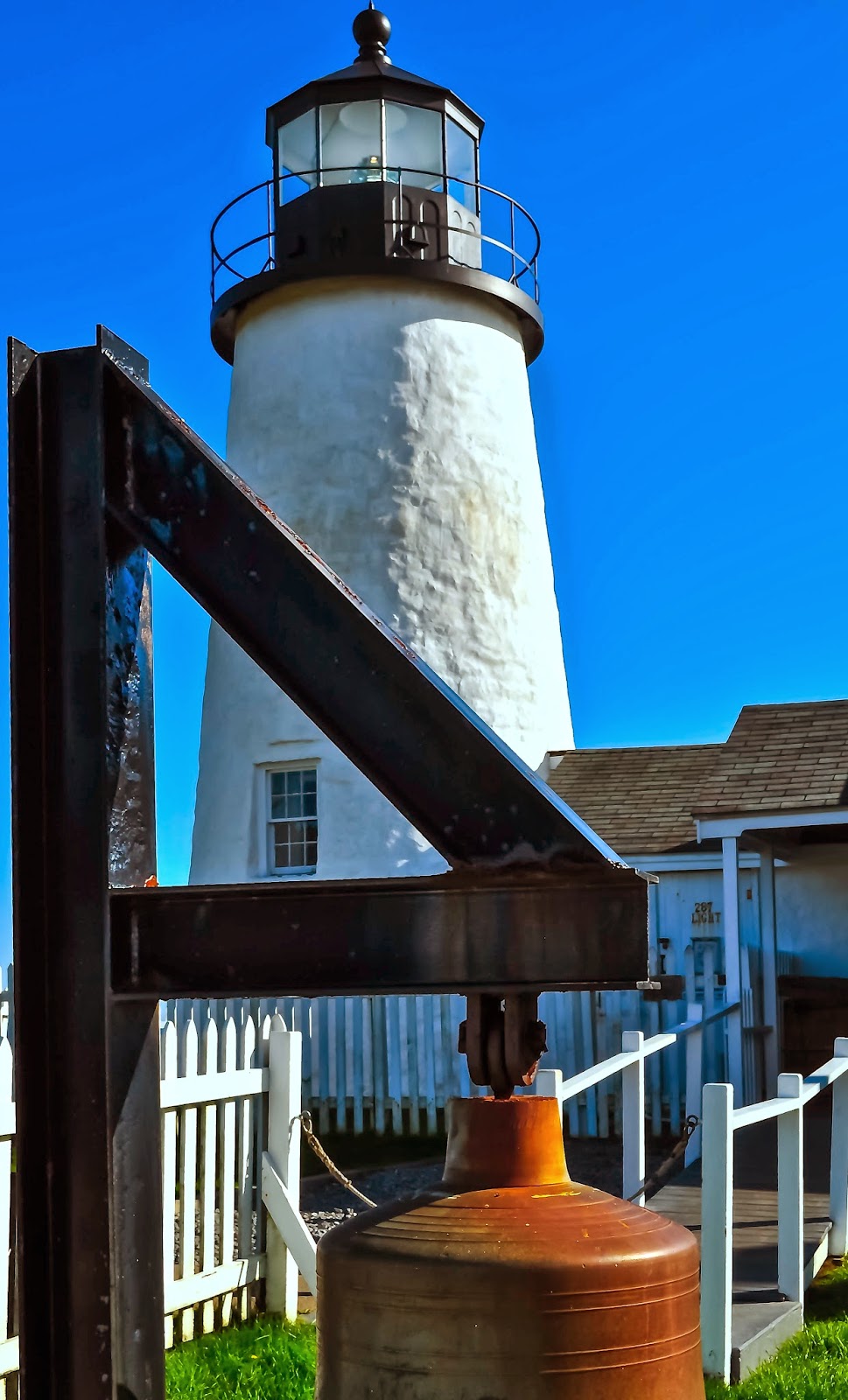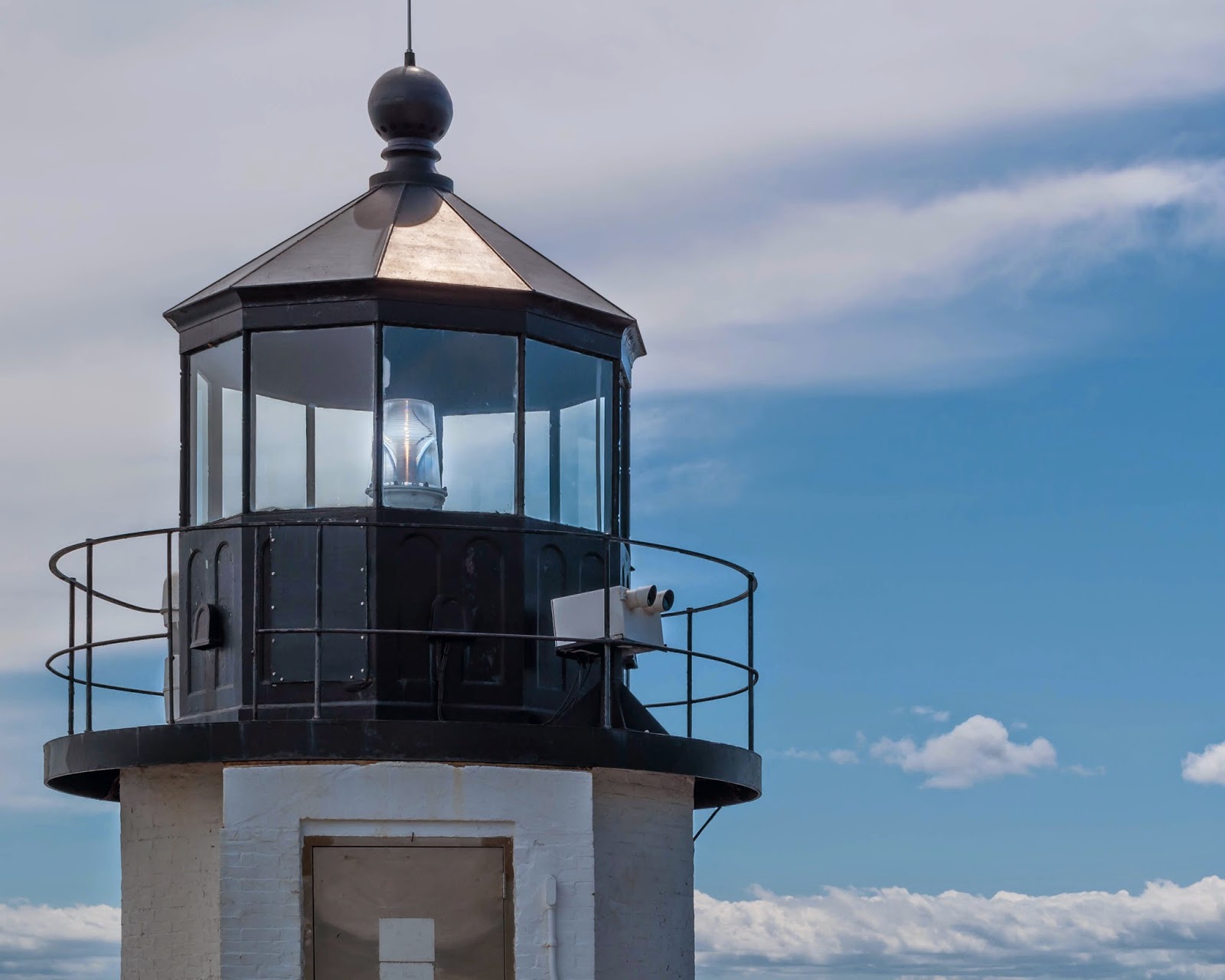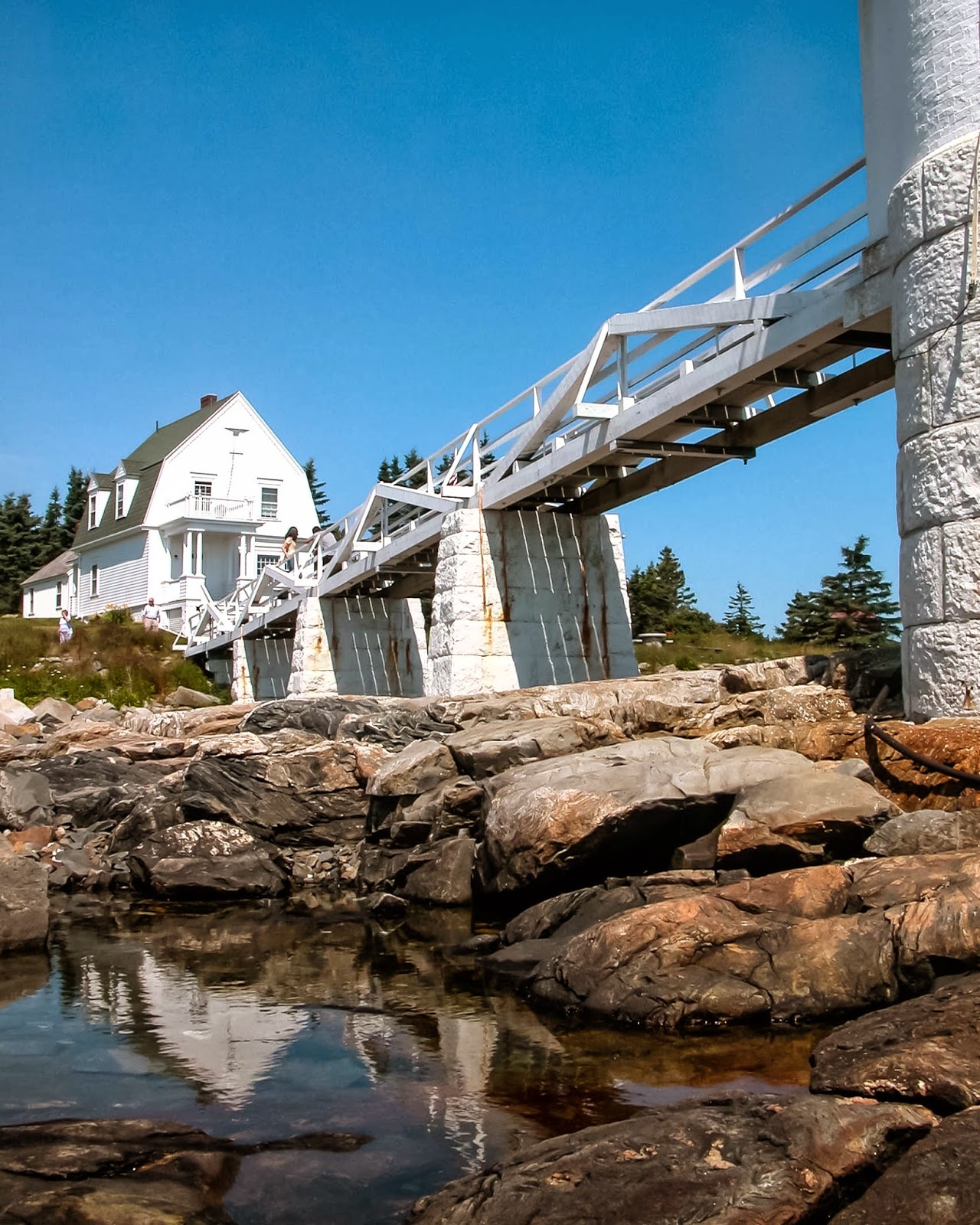The history of aids to navigation on Ram Island began in the mid-1800s when a fisherman, after narrowly escaping the dangerous rocks near the island, began hanging a lantern at night for the benefit of local mariners. The fisherman left the area after a number of years and the lantern was kept by a second keeper, then a third.
The third lantern keeper anchored a dory and rigged the lamp in its bow. It became the custom for the last fisherman coming into the harbor each day to light the lantern. This ended when the dory was smashed in a storm.
For a time, the lone resident of Fisherman's Island maintained a lantern. Apparently the light he displayed was too weak, causing an increase in wrecks. Once when a schooner was in danger of coming up on the rocks the fisherman got a line to the vessel and the crew managed to escape to the shore. Soon there was another wreck in which most of the crew were killed.
For some years after this, there was no light on Ram Island. Locals talked of ghosts that warned vessels away from the dangerous rocks. Robert Thayer Sterling, in his book Lighthouses of the Maine Coast and the Men Who Keep Them, tells several eerie stories of Ram Island. One captain swore he was warned by a fog whistle at Ram Island during a snowstorm, which was impossible since there was no such signal there. Another fisherman was in danger of running into the rocks when he saw a burning boat and changed his direction. The next day he saw no trace of the mysterious vessel.
On another unusually dark night, a sailor was approaching Ram when he saw a woman in white waving a lighted torch over her head. The sailor veered off just in time to avoid being dashed on the rocks. Finally, a schooner helmsman claimed that a bolt of lightning illuminated the area moments before the vessel would have struck the ledges.
Congress finally appropriated $25,000 for a lighthouse in 1882. The light went into service on November 5, 1883. Soon after that, a severe hailstorm broke the lantern glass and the lamp was blown out by the wind. The keeper tried to keep the light going through the night by shielding it with newspapers.
The brick lighthouse, with a granite base, is very similar to the towers at Marshall Point and Isle au Haut. The tower was erected some yards offshore and a wooden walkway connected it to the island.
The light was automated in 1965 and the Coast Guard keepers were removed. The station soon fell victim to vandals. The house was damaged, and in 1975 the fourth-order Fresnel lens was stolen. The lens was eventually recovered, and it's now at the museum of the Boothbay Region Historical Society.
In 1977, the Coast Guard repaired the lighthouse for $44,000 and removed the walkway, which had fallen into disrepair. During this renovation, 14,000 bricks were replaced in the tower and the masonry base was repointed. The cast-iron lantern was removed and renovated.
The boathouse was destroyed in the great blizzard of February 6-7, 1978.
The light station was offered to the town of Boothbay, but the high maintenance costs convinced town officials to decline the offer. In 1983, the keeper's house was slated to be destroyed when the Grand Banks Schooner Museum Trust, associated with the Boothbay Railway Museum, stepped in and leased the station except for the tower. Under the Maine Lights Program, the property was transferred to the Grand Banks Schooner Museum Trust in 1998.
The Ram Island Preservation Society, part of the Grand Banks Schooner Museum Trust, has restored the house. In late 2002, they reconstructed the walkway from the shore to the lighthouse tower.
Directions: From U.S. 1 take ME 27 south to Boothbay Harbor. Then take ME 96 east and south to Ocean Point and follow the shoreline loop road. Along that road there are numerous points to view the lighthouse across FishermanIsland passage. Ram Island Light can also be seen from many of the tour boats out of Boothbay Harbor and Bath.
Credits: I would like to thank Jeremy D'Entremont, webmaster of, http://www.newenglandlighthouses.net/, for sharing the above history. Jeremy is a speaker, author, historian, and tour guide who is widely recognized as the foremost authority on the lighthouses of New England. To view a story on him, go to, (Jeremy D'Entremont).


















































